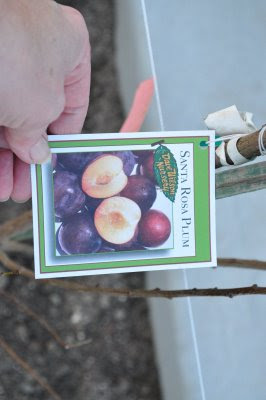

The redwood posts are in and the 3 lines of wire have been strung. We pruned 6 fruit trees in espalier fashion to train them along those lines. Anything above the tallest line got lopped off. Pruning was difficult because I could see the plump buds that I was eliminating. Here's an upclose image of the apricot along with a view of all the trees that were pruned. As the summer progresses, I'll post updates to show how they develop.















